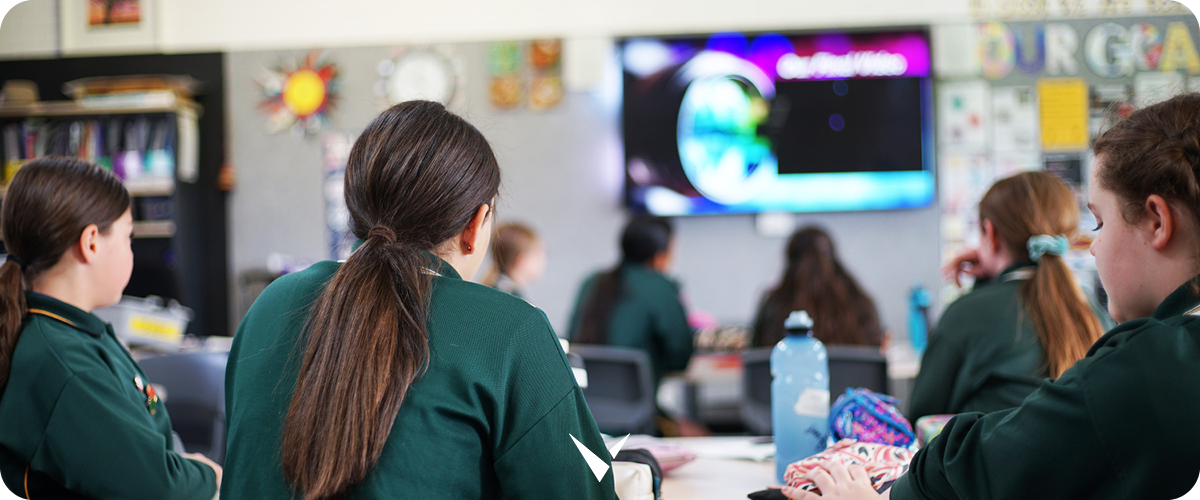
While the pandemic continues to change the education landscape and institutions make efforts to ensure continuity of instruction, technology has opened up the possibility for flexible, functional class experiences. Despite the fact that educators, administrators, and parents worked hard to keep learning alive, the quality of education provided in classrooms was hard to match. To overcome this, tools for student engagement are helping bridge this learning gap.
According to an article by the University of Michigan-Dearborn: “The pandemic has magnified many inequities within American society, including in education. Teachers, administrators and scholars are now sounding the alarm that the “learning loss” brought on by a disrupted school year may have long-lasting impacts, particularly among students in schools that were already short on resources.”
More flexible staffing models will be required now that students are back in the classroom. There also needs to be a clear understanding of which activities to prioritize for in-class instruction and the identification of the students who need it most. Teachers require the flexibility to switch between different teaching methods as necessary.
Many apps, software, and platforms support communication, collaboration, and engagement for learners in any context. Digital tools provide a way to implement social media, online games, multimedia, text, images, audio, and video for an immersive experience in which both students and teachers can use to interact.
Companies have developed learning software and applications to support students inside the classroom during this transition back to school. These tools for student engagement are used to create an immersive environment and offer a better chance to personalized lessons for each of them.
As an IT manager, you might wonder what tools schools are using to close the achievement gap using digital technology?
Related: Why standardised software makes education easier
Useful Digital Tools for Student Engagement
The environment and methods by which students learn are changing. Teachers are asking their IT departments and school boards for help. Many requests are founded by the desire to leverage modern technology that provides efficiencies as well as improved student engagement, and tools more suited for enterprises don’t suffice.
Last year, instructors and faculty had to quickly learn an entirely new way of teaching and interacting with students. As part of this quest, IT had to help these stakeholders reach out and communicate. Many didn’t have access to comprehensive tools for student engagement to create accessible, flexible, collaborative, and inclusive learning environments.
With the aid of digital tools, teachers and students are able to access content, resources, and platforms that enhance instruction and personalize learning. It is essential to understand how they operate in order to teach and administer them. Additionally, digital technology makes school processes and classroom routines more accessible, collaborative, efficient, and effective.
To close the gap, and improve schools’ efforts to achieve their goals, faculty, staff and IT need to be comfortable with digital tools and how they support student engagement. Here are some ideas for engaging students:
1. Sharing of Screens
Screen mirroring, screencasting, and screen sharing are some of the technologies that are being used in academic settings, often collectively referred to as wireless presentation solutions. Many of these technologies are supported by devices and apps that allow students and professors to share content on a larger screen in the classroom.
By encouraging students to share their work, teachers help them become more confident. Learning becomes more meaningful when students know their work is valued.
2. Multi-Screen
One of the best tools for student engagement is flexible screens. The classroom can have a larger primary display and many smaller displays distributed throughout the room. Several students can be assigned to a display to work together and then share their work on the primary display. The teacher maintains complete control over screen sharing while also promoting inclusion and feedback.
3. Digital Signage
In digital signage, video or multimedia content is shown on a display for informational purposes. One of the biggest benefits of digital signage in education is that it offers a highly flexible form of communication, completely customizable with little effort. Communication has become a strategic priority in educational environments, especially during Covid times
Selected school stakeholders can send targeted messages to students and staff on a district-wide, school-wide, or classroom-by-classroom basis. Wherever school technology is available, for instance, a projector, monitor, LCD, LED, LED, LCD, programmers can show programs, menus, announcements, safety measures, etc.
There are solutions in the market that provide all of these and more features like dashboards, metrics, active directory, bulk configuration, bulk update, and even emergency broadcast.
Related: Behind the tech: A Software Engineer’s guide to getting started in edtech
Closing the Learning Gaps with Edtech
A study by McKinsey & Company found that students, on average, could be behind by up to nine months in math. For students of color, it increased to 12 months. Individual districts are reporting unprecedented increases in failing grades.
EdTech features can support efforts to improve student outcomes, both academically and socially, accelerating learning, and addressing the issue of interrupted education. Are there specific things you could do with them in the classroom? Definitely. The following sections explain them.
Create a Personalized Experience
In response to the pandemic, schools across the nation have gotten closer to having a one-to-one student-to-device ratio. There are still districts that are underserved when it comes to devices or connectivity. Education can now be tailored to meet the needs of all students, especially considering the Federal Relief Funding that can be used for EdTech.
With digital learning tools, instruction can be customized to the learner. While students are at their workstations, educators can share their screens while getting from behind their desk and move about the room, ready to offer guidance and assistance as needed.
Leverage Digital Tools for Student Engagement
Teachers can use technology to teach and build relationships with students, all while saving time typically spent on manual tasks and other instructional inefficiencies. The same goes for IT administrators, who have limited time to give support, look for new tech, and lead school-wide digital transformations.
With more time, teachers can identify learning issues faster and intervene sooner. They can create a more inclusive, collaborative learning environment that minimizes the challenge of keeping students engaged.
IT administrators can also better service customers and support the digital transformation needed by schools with an open, friendly, remote learning system.
Teachers as Mentors
Teachers and instructors can be mentors from an educational and technology perspective.
The most significant adoption issues can be mitigated by providing teachers with a way to troubleshoot their tech issues with the new technology, either one-on-one tech support or online guides. A teacher tech mentor is an excellent support system for colleagues who are struggling. While doing so, they also become IT helpers.
Nonetheless, with wireless digital solutions like screen sharing, digital signage, and multiscreen, teachers no longer need to sit behind their desks to teach from their computers. Whenever possible, they can work side-by-side with a student.
Teaching without wires eliminates trip hazards and helps teachers regain mobility with students. More than teachers they become mentors helping students with their particular needs, without losing track of the lesson.
What to discover ways on how to use tools for student engagement to close the learning gaps? Request a demo from Vivi and from the IT department, help your district catch up with learning and improve education as a whole.



